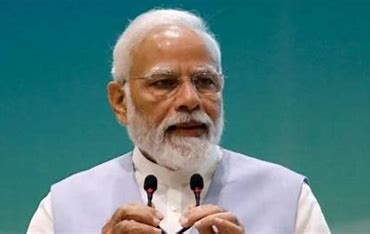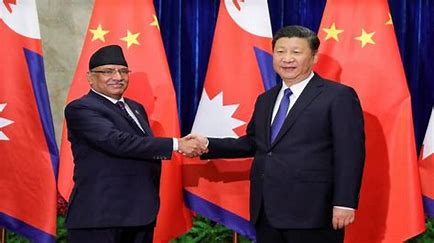
Steeped in tradition, the history of tea in India is a journey that unfolds in delicate leaves and aromatic whispers, a tale of cultivation and community, where each sip narrates the poetry of plantations and the warmth of shared moments.
In India, the semi medicinal use of tea brew is noted in 1662 by Johan Albrecht de Mandelslo (1616–1644) was a seventeenth-century German adventurer, who wrote about his travels through Iran and India.
In 1689, Ovington records that tea was taken by the banias in Surat without sugar, or mixed with a small quantity of conserved lemons, and that tea with some spices added was used against headache, gravel and gripe. The tea leaves for such use may have come from China.
While experimenting to introduce tea in India, British colonists noticed that tea plants with thicker leaves also grew in Assam, and these, when planted in India, responded very well. The same plants had long been cultivated by the Singphos tribe of Assam, and chests of tea supplied by the tribal ruler Ningroola. The Assamese and Chinese varieties have been regarded in the past as different related species, but are now usually classified by botanists as the same species, Camellia sinensis.
In the early 1820s, the British East India Company began large-scale production of tea in Assam, India, of a tea variety traditionally brewed by the Singpho people. In 1826, the British East India Company took over the region from the Ahom kings through the Yandaboo Treaty. In 1837, the first English tea garden was established at Chabua in Upper Assam; in 1840, the Assam Tea Company began the commercial production of tea in the region. Beginning in the 1850s, the tea industry rapidly expanded, consuming vast tracts of land for tea plantations. By the turn of the century, Assam became the leading tea-producing region in the world.
The introduction of Chinese tea plants, different from Indian tea, to India is commonly credited to Robert Fortune, who spent about two and a half years, from 1848 to 1851, in China working on behalf of the Royal Horticultural Society of London. Fortune employed many different means to steal tea plants and seedlings, which were regarded as the property of the Chinese empire. He also used Nathaniel Bagshaw Ward’s portable Wardian cases to sustain the plants. Using these small greenhouses, Fortune introduced 20,000 tea plants and seedlings to the Darjeeling region of India, on steep slopes in the foothills of the Himalayas, with the acid soil liked by Camellia plants. He also brought a group of trained Chinese tea workers who would facilitate the production of tea leaves. With the exception of a few plants which survived in established Indian gardens, most of the Chinese tea plants Fortune introduced to India perished. The technology and knowledge that was brought over from China was instrumental in the later flourishing of the Indian tea industry using Chinese varieties, especially Darjeeling tea, which continues to use Chinese strains.
From the first, Indian-grown tea proved extremely popular in Britain, both for its greater strength, and as a patriotic product of the empire. Tea had been a high-status drink when first introduced, but had steadily fallen in price and increased in popularity among the working class. The Temperance movement massively promoted tea-drinking, from the early 19thC on, as an alternative to beer – water being of dubious quality, but the complete boiling necessary for tea rendering it safe. Many men in particular found China tea insipid, and the greater strength and lower price of Indian teas appealed greatly. By the last quarter of the nineteenth century, big brands such as Lyons, Liptons and Mazawattee dominated the market.
Tea was the dominant drink for all classes during the Victorian era, working-class families often doing without other foods in order to afford it. This meant the potential market for Indian teas was vast. Indian tea (effectively including Ceylon tea from Sri Lanka) soon came to be the “norm”, with China tea a minority taste. Until the 1970s and the rise of instant coffee, Indian tea had almost sole command of the hot drinks market. Its rivals were cocoa, coffee and savoury drinks such as Bovril and Oxo. In recent decades, Asian tea has lost much ground in the cheaper end of European markets to tea from Africa, especially Kenyan tea
India is one of the largest tea producers globally, and its tea industry is deeply intertwined with its cultural and economic fabric. The history of tea in India reflects a captivating journey of exploration, experimentation, and the cultivation of a beverage that has become an integral part of daily life for millions.
The history of tea in India dates back to ancient times, with its origins steeped in legends and folklore. It’s believed that tea was first discovered in China around 2737 BCE. However, it wasn’t until the British East India Company established its presence in India that tea cultivation began to take root.The British, who were avid tea drinkers, sought to break China’s monopoly on tea production by establishing tea cultivation in India. In 1823, the British botanist Robert Bruce discovered indigenous tea plants growing wild in the hills of Assam, a region in northeastern India. This discovery led to the establishment of the first tea gardens in Assam, marking the beginning of commercial tea production in India.
By the mid-19th century, tea cultivation had spread to other regions of India, such as Darjeeling, Nilgiris, and Dooars. British planters introduced modern techniques of cultivation, processing, and blending, transforming tea into a major industry in India.During this period, large tea estates were established, and labor was sourced from various regions, including India and neighboring countries. The tea industry became a significant economic force, providing employment opportunities and contributing to India’s colonial economy. After India gained independence in 1947, the tea industry continued to flourish, with the government taking steps to promote and regulate tea production. Today, India is one of the world’s largest producers and consumers of tea, known for its diverse varieties and rich cultural significance. Tea remains an integral part of Indian culture, enjoyed by people from all walks of life.
Today, we will provide you insights on historical significance and present relevance of tea in India’s life.
1. *Darjeeling Tea*: In the mid-19th century, tea cultivation began in the Darjeeling region of West Bengal. Darjeeling tea, with its unique flavor and aroma, soon gained international acclaim and became known as the “Champagne of Teas.” It is prized for its delicate taste and is often considered one of the finest teas in the world.
2. *Nilgiri Tea*: Tea cultivation also expanded to the Nilgiri hills of southern India during the 19th century. Nilgiri tea is known for its brisk, full-bodied flavor and is commonly used in blends and flavored teas.
3. *Assam*: Assam is the largest tea-producing region in India, known for its robust and malty black teas. It accounts for a significant portion of India’s total tea output and is characterized by its lush plains and abundant rainfall, ideal for tea cultivation.
4. *Dooars-Terai*: The Dooars region in West Bengal and the Terai region in neighboring states are important tea-producing areas, known for their lush forests and fertile plains. Tea estates in these regions produce a range of teas, including robust black teas and milder green teas.
5. *Other Regions*: In addition to the major tea-growing regions mentioned above, tea is also cultivated in various other parts of India, including Kerala, Karnataka, Tamil Nadu, and Himachal Pradesh. Each of these regions contributes to India’s overall tea production, offering a diverse range of flavors and styles.
6. *Tea Auctions*: The establishment of tea auctions in cities like Kolkata (formerly Calcutta) played a crucial role in the development of the tea industry in India. These auctions provided a platform for tea producers to sell their products to buyers from around the world, ensuring fair prices and transparency in trade.
7. *Indian Tea Association*: Formed in 1881, the Indian Tea Association (ITA) played a pivotal role in promoting the interests of tea growers and exporters in India. It also contributed to the standardization of tea production practices and the establishment of quality control measures.
8. *Impact on Indian Society*: The tea industry had a significant impact on Indian society, particularly in regions where tea cultivation became a dominant economic activity. It led to the migration of laborers from various parts of India, including tribal communities from central India and neighboring countries like Nepal and Bangladesh, to work in tea estates.
9. *Cultural Significance*: Tea has become deeply ingrained in Indian culture and is consumed in various forms, including chai (spiced tea), masala chai (spiced tea with milk), and regional specialties like Kashmiri Kahwa and South Indian filter coffee. Tea is often served during social gatherings, religious ceremonies, and as a hospitality gesture in Indian households.
Overall, the history of tea in India is a tale of innovation, economic development, and cultural integration, reflecting the country’s diverse heritage and global influence in the world of tea production and consumption. India is one of the largest tea producers in the world, renowned for its diverse varieties and high-quality teas. The country’s tea production is primarily concentrated in several key regions, each known for its unique flavor profiles and growing conditions:
India’s tea production is a vital component of its agricultural sector, providing employment opportunities for millions of people and contributing significantly to the country’s economy. The tea industry continues to evolve, with ongoing efforts to improve cultivation practices, promote sustainability, and meet the growing demand for Indian teas both domestically and internationally.















